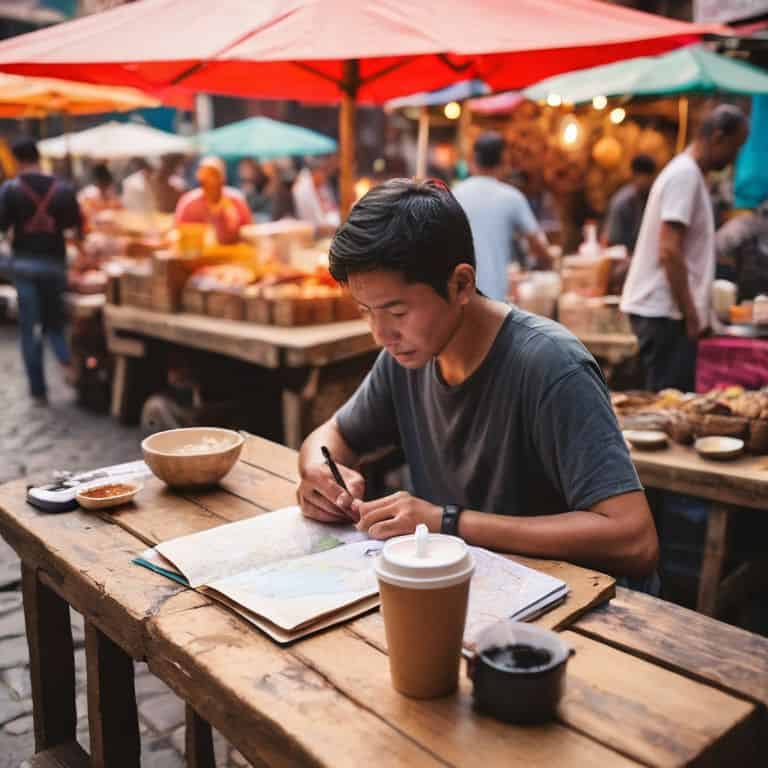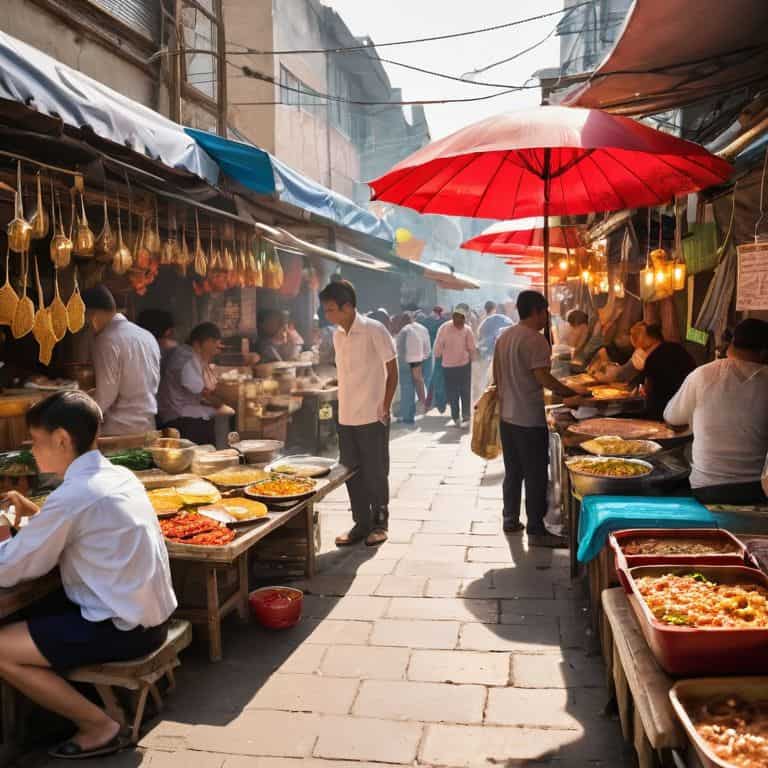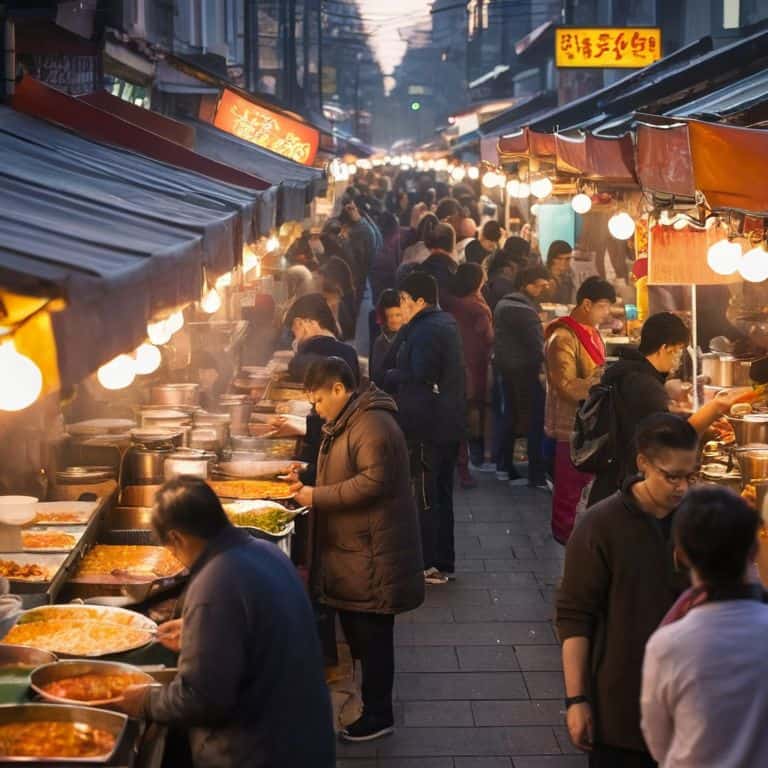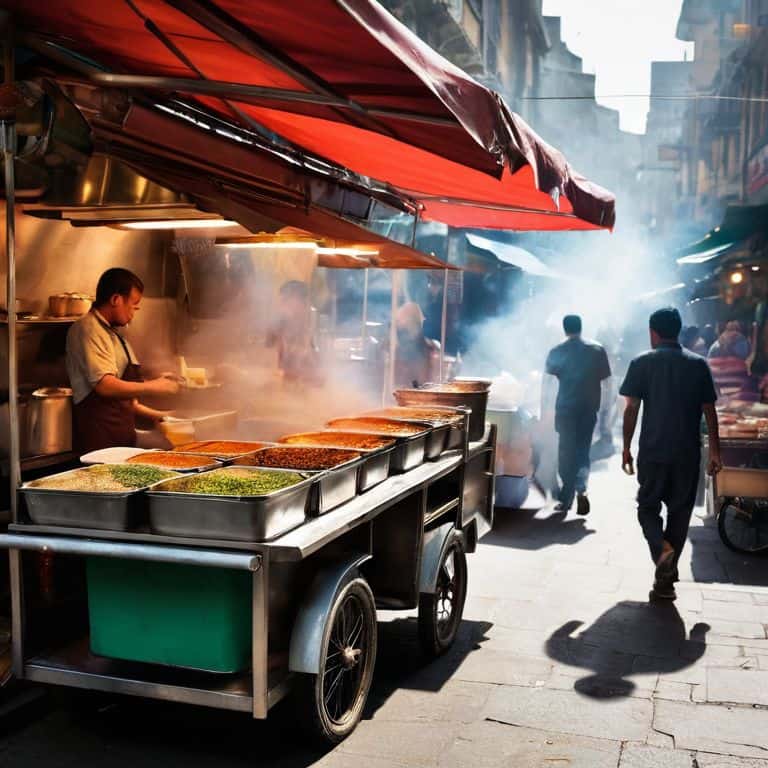I still remember the first time I tried street food in a foreign country – the flavors, the smells, the sounds. It was like a symphony of sensations that left me wanting more. But, I’ve often been met with warnings from fellow travelers about the dangers of eating from street vendors, and how it’s a surefire way to get sick. Let me tell you, after years of traveling and eating my way through a guide to eating street food safely, I’ve found that this couldn’t be further from the truth. The real secret to enjoying street food lies not in avoiding it, but in understanding the local culture and eating habits of the people who prepare it.
As someone who’s spent years collecting spices and learning to cook from grandmothers in every country I visit, I’m excited to share my no-nonsense advice on how to navigate the world of street food with confidence. In this article, I’ll take you through the essential tips and tricks I’ve learned along the way, from identifying trustworthy vendors to avoiding common pitfalls. Whether you’re a seasoned traveler or just starting to explore the world of street food, this guide will give you the practical knowledge you need to enjoy the authentic flavors of the world, without worrying about getting sick. So, buckle up and let’s dive into the world of street food, where the real magic happens.
Table of Contents
Guide Overview: What You'll Need

Total Time: varies, but research and planning take around 1 hour
Estimated Cost: little to no cost, as this guide focuses on safe eating practices
Difficulty Level: Easy
Tools Required
- Common Sense (to assess food vendor cleanliness)
- Water Bottle (for staying hydrated)
- Hand Sanitizer (with at least 60 percent alcohol content)
Supplies & Materials
- Guidebook or Map (to locate reputable food vendors)
- Local Currency (for purchasing street food)
- Reusable Utensils (optional, for reducing plastic waste)
Step-by-Step Instructions
- 1. First, do your research on the local street food scene before diving in, and I don’t just mean reading about it online – talk to fellow travelers, locals, and expats to get the inside scoop on the best and safest spots to try. I’ve found that word of mouth is still the best way to discover hidden gems, and it’s amazing how much information you can gather just by striking up a conversation with someone who’s been around.
- 2. When scouting out street food stalls, look for the ones with a high turnover of customers – this is usually a good sign that the food is fresh and safe to eat. Also, take note of the vendors who are cooking to order, as this reduces the risk of food sitting out for too long. I’ve had my fair share of questionable meals, but I’ve learned that following the crowd can be a good strategy, especially when it comes to popular street food destinations.
- 3. Next, observe the cooking process to ensure that the vendor is handling the food safely – are they washing their hands regularly, and are the utensils and cooking surfaces clean? It’s also a good idea to choose stalls that are cooking with fresh ingredients, rather than relying on pre-cooked or processed foods. I’ve seen some vendors use ingenious techniques to keep their ingredients fresh, such as using insulated containers or ice packs to keep meats and dairy products cool.
- 4. When it’s time to order, be mindful of the menu and avoid anything that may be high-risk, such as undercooked meats or raw vegetables that may not have been properly washed. Instead, opt for grilled or fried options, which are generally safer choices. I’ve found that learning a few key phrases in the local language can go a long way in helping you navigate the menu and communicate with the vendor.
- 5. Once you’ve ordered, keep an eye on your food as it’s being prepared, and make sure that the vendor is handling it safely. If you notice anything that doesn’t seem right, don’t be afraid to speak up or walk away – it’s better to be safe than sorry. I’ve had to trust my instincts on more than one occasion, and it’s saved me from a few potentially disastrous meals.
- 6. When it comes to drinks and desserts, be cautious of anything that may contain untreated water or ice, such as fresh juices or ice cream. Instead, opt for sealed beverages or hot drinks, which are generally safer choices. I’ve learned to appreciate the simple things, like a good cup of coffee or tea, which can be a great way to experience the local culture without taking any unnecessary risks.
- 7. Finally, be respectful of the local culture and customs when eating street food, and don’t be a stranger – engage with the vendors and the community, and show appreciation for the food and the people. I’ve found that building relationships with the people you meet on the road can lead to some amazing experiences, and it’s a great way to get a deeper understanding of the local cuisine and way of life.
Savoring Streets Safely

As I wander through the vibrant streets of foreign cities, I’ve learned that cultural dining etiquette tips can make all the difference in having a positive experience. For instance, in some countries, it’s considered impolite to eat with your left hand, while in others, finishing a meal completely can imply that the host didn’t provide enough food. Being mindful of these nuances can help you navigate street food vendor reputation and avoid unintentionally offending the locals.
When it comes to recognizing food poisoning symptoms, it’s essential to be aware of the common signs, such as stomach cramps, diarrhea, and vomiting. If you experience any of these symptoms after eating street food, it’s crucial to stay hydrated by drinking safe drinking water abroad. I always make it a point to carry a refillable water bottle with me and opt for vendors who use filtered water in their cooking.
To further minimize the risk of common street food illnesses, I recommend being cautious of foods that are high-risk for contamination, such as undercooked meat or raw vegetables. If you have street food allergy considerations, be sure to ask your vendor about the ingredients used in their dishes. By taking these extra precautions and being respectful of local customs, you can enjoy the authentic flavors of the street food scene while maintaining a safe and healthy dining experience.
Avoiding Common Street Food Illnesses
As I’ve learned from my own misadventures, a few common culprits can put a damper on your street food escapades. Food poisoning from undercooked meat or unripe fruit is a real concern, but with a discerning eye, you can steer clear of trouble. I recall a stall in Bangkok where the vendor would cook chicken to perfection, while her neighbor’s stall seemed to be a breeding ground for bacteria. The difference? Attention to detail and a commitment to cleanliness.
By being mindful of these potential pitfalls, you can indulge in the rich flavors of street food with confidence. From avoiding unpeeled fruits and veggies to opting for stalls with high turnover, a little awareness goes a long way. Trust your instincts, and don’t be afraid to ask questions – the vendors are often more than happy to share their secrets with curious travelers like ourselves.
Safe Sips Abroad Drinking Water Secrets
When I’m on the road, I always keep an eye out for vendors selling fresh coconut water or locally-sourced juices. Not only are they a great way to stay hydrated, but they’re also a delicious way to experience the local flavors. I’ve found that many street food stalls also offer filtered water or infused water with fruits and herbs, which are not only safe to drink but also packed with flavor. In some countries, I’ve even stumbled upon vendors selling water from natural springs or wells, which are often safer than tap water. By being mindful of my water intake and opting for these local options, I’ve been able to stay healthy and happy on my travels.
Street Smarts: 5 Essential Tips for Safely Savoring the Flavors of the World
- Trust Your Senses: If a street food stall looks dirty, smells off, or the food is left unattended, trust your instincts and keep walking
- Get to Know the Vendor: Building a relationship with the person cooking your meal can give you insight into their food handling practices and help you avoid potential health risks
- Stick to Busy Stalls: Popular street food vendors often have high turnover, which means the food is prepared fresh and served quickly, reducing the risk of contamination
- Choose Cooked Foods Wisely: Opt for foods that are cooked to order, like grilled meats or steaming hot noodles, and avoid raw or undercooked foods that can pose a risk of foodborne illness
- Follow the Locals: Observe what the locals are eating and where they’re eating it – if a stall is popular with the community, it’s likely a safe and delicious bet
Key Takeaways for Fearless Foodies
Embracing street food as a culinary adventure, rather than a mere meal, can lead to a deeper understanding and appreciation of local cultures and traditions
By understanding the local context, being mindful of food handling and preparation, and taking a few simple precautions, you can significantly reduce the risk of getting sick from street food and focus on savoring the authentic flavors of the world
Ultimately, the true magic of street food lies not just in its taste, but in the stories, people, and places behind each dish, making every bite a journey of discovery and connection to the global community
Street Food Wisdom
The thrill of street food isn’t just about the flavors, it’s about embracing the unknown and trusting the hands that feed you – with a dash of caution and a whole lot of curiosity, of course!
Marco Bianchi
Savoring the Flavors of the World

As I reflect on my journey to create this guide to eating street food safely, I’m reminded of the importance of being mindful of our surroundings and taking necessary precautions. We’ve covered the essential steps to savor the flavors of the world without compromising our health, from choosing the right stalls to avoiding common illnesses. By following these guidelines, we can indulge in the rich culinary heritage of different cultures, just like I have on my own adventures. From the spicy kick of Korean kimchi to the aromatic flavors of Indian curries, each dish tells a story of its people and their traditions.
As we conclude this journey, I want to leave you with a final thought: the true beauty of street food lies not just in its taste, but in the connections it fosters. Whether you’re sitting on a plastic stool in a bustling market or sharing a plate with strangers, street food has the power to break down barriers and bring us closer to the heart of a culture. So, go ahead, take a bite, and let the flavors of the world inspire your next adventure.
Frequently Asked Questions
What are some common street food illnesses to watch out for and how can I recognize the symptoms?
From Bali belly to Delhi belly, I’ve seen my fair share of street food sicknesses. Common culprits include food poisoning from undercooked meat or contaminated produce, and waterborne illnesses like giardiasis. Symptoms can range from mild stomach cramps to full-blown diarrhea and vomiting – trust me, you don’t want that on your travel itinerary.
How can I ensure the water or ice used in street food and drinks is safe to consume?
When it comes to water and ice in street food, I’ve learned to trust my vendors – if they’re drinking it, I am too. Look for stalls with high turnover, and check if they’re using filtered or bottled water. In a pinch, opt for hot drinks or beers, which are usually safer bets.
Are there any specific street foods or ingredients that are more high-risk for foodborne illness, and how can I enjoy them safely?
Ah, my friends, let’s talk high-risk heroes like raw oysters, spicy tacos, and juicy kebabs. These street food staples can be breeding grounds for bacteria, but that doesn’t mean you have to skip them. Just remember, freshness is key, and a reputable vendor is your best bet. I always say, ‘know your source’ – ask locals for recommendations and enjoy in moderation.
